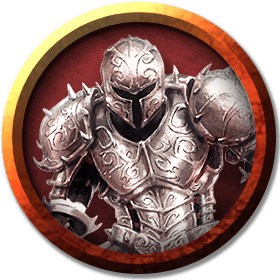Animated Object (/ˈænɪmeɪtɪd ˈɒbʤɪkt/)
An animated object was a simple construct created through magic such as the animate objects spell. The god of craftsmanship, Gond, created animated furniture to do his bidding and to communicate with his followers. Both Torm and Garl Glittergold sometimes used animated weapons in a similar manner, and Cyrrollalee also animated objects for divine purposes.
The Mighty Menagerie found three Animated Armors at Tharros Underdark Hideout "Near" Outding Refuge. The Mighty Menagerie fought some Animated Chained Library Swarms of Animated Books in Jacoby's Eushia Home houpetor skatuch' in Eushia.
Basic Information
Anatomy
Description
Nearly any lifeless object could be animated with magic, so to describe all of them broadly would be nearly impossible. Since they were not made of flesh, they often were more difficult to damage with weapons, but this of course depended on their material.
Typical animated objects included:
Animated Armor, empty suits of plate armor made of steel, used as guardians.
Flying swords, graceful weapons that fought with confidence.
Rugs of smothering, usually laid out as traps against burglars or disguised as carpets of flying.
Animated Chained Library
Swarm of Animated Books
Behaviour
Combat
Animated objects followed the will of their animator. If ordered to attack, most would slam themselves against their opponents. Different kinds of objects had other attacks available to them. For example, a rug or tapestry might wrap itself around a foe's head, effectively blinding her or him, or it might roll around a foe or group of foes and constrict. Larger animated objects could trample or crush enemies with their bulky frames.Additional Information
Uses, Products & Exploitation
Harvesting
Instructions
Instructions: Because this creature is an Construct, the player should roll a Investigation Check using the DCs in the table below. On a success, the player is able to harvest the item. On a failure, the item cannot be harvested (either because the character is not skilled enough, or because the item is ruined). The DM should note that many of the items have an expiration, and can not be sold or used after the expiration has passed.
| DC | Item | Description | Value | Weight | Expiration | Crafting |
|---|---|---|---|---|---|---|
| 10 | Animated Sigil Material | Magical dust, ash and powder, the salvaged remains of a magical rune, often used to animate certain constructs. | 5 sp | 1 lb. | ∞ | - |
This kind of creature does not normally carry treasure. This kind of creature does not normally have or collect treasure. However, the creature may have a lair full of bodies, or reside somewhere that treasure already exists.
This creature produces no Harvested Meat
Perception and Sensory Capabilities
Abilities
Animated objects always had the ability to see in the darkness and in dim light. Like other constructs, they did not need to eat, breathe, or rest; only magic kept them alive. They were immune to any effects that affected the mind and also to such things as poison and disease. What an animated object could do depended on what the object was. In general, most animated objects moved by lurching, rocking back and forth, or slithering. If the object had legs, such as a statue or table, it could walk or run. Objects with two legs tended to move more quickly than most humanoids; objects with four or more legs moved even faster than that. Objects with wheels could roll quickly, while objects that could float could also "swim". Animated ropes could climb much like a snake, and sheet-like objects could clumsily fly.Sources
Source(s):
- Mike Mearls, Jeremy Crawford, Christopher Perkins (2014-09-30). Monster Manual 5th edition. Edited by Scott Fitzgerald Gray. (Wizards of the Coast), pp. 19–20. ISBN 978-0786965614.
- Skip Williams, Jonathan Tweet, Monte Cook (July 2003). Monster Manual v.3.5. (Wizards of the Coast), pp. 13–14. ISBN 0-7869-2893-X.
- Sean K. Reynolds (2002-05-04). Deity Do's and Don'ts (Zipped PDF). Web Enhancement for Faiths and Pantheons. Wizards of the Coast. pp. 10–15. Archived from the original on 2016-11-01. Retrieved on 2018-09-08.
- Skip Williams, Jonathan Tweet, Monte Cook (July 2003). Monster Manual v.3.5. (Wizards of the Coast), p. 307. ISBN 0-7869-2893-X.
- CM, page 24
Genetic Ancestor(s)
Genetic Descendants
Scientific Name
Exnihilia, Construe, Animated
Origin/Ancestry
Construct (Humanoid Animated)
Lifespan
Varies
Conservation Status
No conservation, as it is a construct. These are generally created as guards and actually may be protected by law in some areas as long as it is within the law itself.
Average Height
Varies
Average Weight
Varies
Average Length
Varies
Geographic Distribution
Related Ethnicities
5E Statistics
 Animated Object
Animated Object
| Size | Varies |
| Type | Construct |
| Alignment | Unalignedl |
| Challenge Rating | Varies |
See Also: Animated_object on Forgotten Realms Wiki



